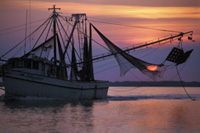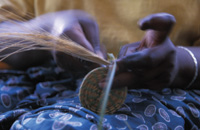Living History
Tony Arruzas Offshore Interests
The assignment from Endless Vacation magazine was to photograph the Gullah and Geechee people of the sea islands off Georgia and South Carolina. "The magazine was interested in portraying a people who live and work in much the same way as their ancestors," says Florida-based commercial and editorial photographer Tony Arruza. |
|||
The Gullah and Geechee are descendants of West African slaves who were brought to America to work the cotton plantations and develop rice crops. Because of the relative isolation of the sea islands, much of their culture is intact today, especially on Sapelo Island, Georgia, and St. Helena Island, South Carolina. Getting Familiar |
|||
One of the locals on Sapelo
Island gave him some good advice. "He told me not to carry my cameras
at first. He said to spend a few days just walking around Hog Hammock,
which is the area where most of the locals live. Talk to the people, he
said, and get to know them. Let them see who you are, and be honest about
what you want to do." |
|||
A Delicate Balance |
|||
Tony made three trips to the
islands, each lasting about two weeks. On the third visit he attended
a Sapelo Island festival and brought prints to many of the people he'd
previously photographed. He plans on going back. |
|||
Note: You can see more of Tony's photography of the sea islands on his web site, www.arruza.com. Check under "Recent Work. About The Photographs |
|||
"It's funny,"
he adds, "but when the magazine first contacted me they said they
wanted the story entirely shot in color. After I did my research, I thought,
some of the people I'm going to be photographing, if I can get to
them, will be close to 100 years old or more, and I'd love to do
black and white portraits of them. I thought the black and whites would
look a lot more intimate. So the magazine said shoot in color for the
most part, and if you want to add black and white, go ahead. When they
saw all the pictures, they ended up doing the story in black and white." |








































